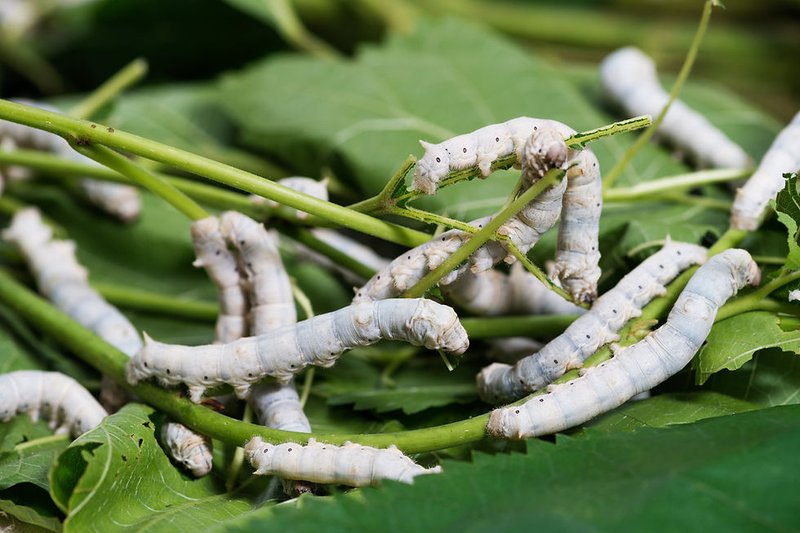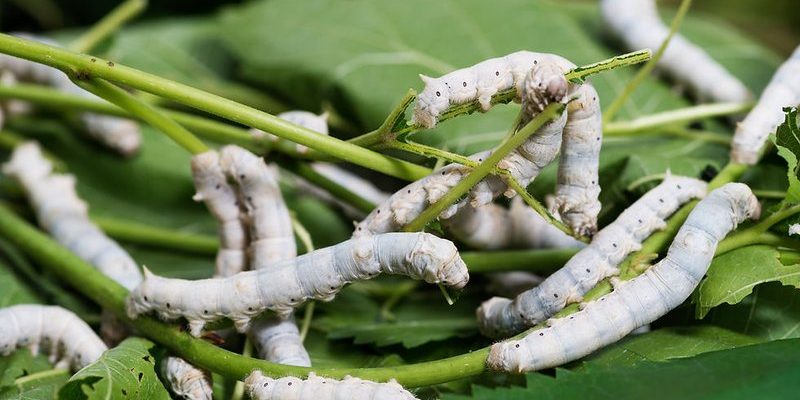
So why should we care about these worms? Well, silkworm farming has several benefits that extend beyond just creating beautiful silk. It supports rural livelihoods, encourages sustainable practices, and even plays a part in innovation. Plus, the silk itself is a fascinating material that offers unique properties. Let’s dive deeper into why silkworm farming is still relevant today and how it impacts us all.
The Economic Importance of Silkworm Farming
Silkworm farming is a significant contributor to the economy, especially in countries like China, India, and Brazil. It supports the livelihoods of millions of farmers who rely on this practice for their income. These farmers often engage in *sericulture*, which is the cultivation of silkworms for silk production. This process creates a ripple effect, supporting jobs in weaving, dyeing, and selling silk products.
You might be wondering how this translates into actual numbers. In many regions, the silk industry can generate substantial revenue, contributing to both local and national economies. For example, the global silk market is expected to reach over $18 billion by 2025. That’s a lot of cocoons! By investing in silkworm farming, countries can boost their economic independence and create job opportunities in rural areas where jobs are often scarce.
Supporting Rural Communities
Silkworm farming also plays a crucial role in sustaining rural communities. Many farmers engage in silkworm cultivation as a supplement to their traditional farming practices. This dual approach can provide a more stable income, helping families cope with economic fluctuations.
When communities participate in silkworm farming, they often form cooperatives. These cooperatives provide training, resources, and shared knowledge, making it easier for novice farmers to get started. It’s a *win-win* situation that encourages teamwork and community development. You could say that silkworms are little heroes in the fight against poverty.
Environmental Benefits of Silkworm Farming
Here’s the thing: silkworm farming is not just good for the economy; it’s also a sustainable practice. Silkworms feed primarily on mulberry leaves, which are plentiful and require less water compared to other crops. This means that raising silkworms has a lower environmental impact than many other forms of agriculture.
Moreover, since silkworm farming relies on local resources, it reduces the need for harmful pesticides and fertilizers. Most sericulturists adopt organic farming methods, which protect the environment and contribute to biodiversity. So, the next time you see silk, remember that it’s not just a luxury fabric—it’s also a testament to sustainable practices.
Silk vs. Synthetic Fabrics
While synthetic fabrics like polyester are widely available and inexpensive, they come with environmental costs. They’re derived from petroleum products and often take hundreds of years to break down in landfills. In contrast, silk is a natural, biodegradable fabric that, when produced sustainably, boasts a much smaller carbon footprint.
Opting for silk not only supports the economy but also aligns with eco-friendly values. If you’ve ever wrapped yourself in a soft silk scarf, you’ll know that it’s more than just a pretty material. Silk is breathable, hypoallergenic, and helps regulate body temperature, making it a lovely choice for clothing and home textiles.
Innovative Uses of Silk Beyond Clothing
In today’s modern world, silk isn’t just confined to clothing and decor. Researchers and innovators are finding new applications for silk that can revolutionize various industries. For instance, the medical field has embraced silk for its unique properties. Silk proteins are being explored for sutures, tissue engineering, and even drug delivery systems.
Imagine a material that can help heal wounds faster. That’s what silk can do! It promotes cell growth and helps the body recover more efficiently. You might be surprised to find out how a simple farming practice contributes to cutting-edge science.
Silk in the Beauty Industry
Another fascinating area where silk is making an impact is in beauty and wellness. Products like silk pillowcases and sheets have gained popularity for their benefits to skin and hair. They reduce friction, which can help prevent wrinkles and keep your hair looking smooth and shiny.
What’s more, silk is naturally hypoallergenic and resistant to dust mites. So, not only do you get to sleep on a luxurious surface, but you also create a healthier sleep environment. It’s a small change that can lead to significant benefits, showing just how versatile this material can be.
Challenges Facing Silkworm Farmers
While silkworm farming has many benefits, it’s not without its challenges. Like any industry, sericulture faces issues such as climate change, pests, and diseases that can impact production. Farmers need to stay informed and adapt to these changing conditions, which can be a daunting task.
Additionally, as the demand for organic and sustainable products rises, farmers often need to invest in new technologies and practices. This can require financial resources and training, which may not be readily available to every farmer. It’s essential for governments and organizations to support these endeavors to ensure the industry’s sustainability.
Market Competition
Another challenge is competition from synthetic fibers. As mentioned earlier, synthetic fabrics are cheaper and more readily available, which can deter consumers from choosing natural silk. Silkworm farmers must educate consumers about the benefits of silk and the importance of supporting sustainable practices.
Honestly, it’s a tough battle. But with the growing focus on environmental issues and sustainable fashion, there’s hope that more people will appreciate the value of silk and its benefits. Raising awareness and promoting the qualities of silk can help keep this age-old craft alive.
The Future of Silkworm Farming
Looking ahead, the future of silkworm farming seems promising, especially with the trend toward sustainability. More consumers are becoming conscious of where their products come from and are opting for eco-friendly choices. This shift could lead to a resurgence in demand for silk, allowing farmers to thrive.
With technology advancing rapidly, we might also see new innovations that enhance silk production and its applications. Imagine a world where silkworm farming is integrated with smart farming techniques, allowing for precise monitoring and management practices. It’s an exciting time to be involved in this field.
Connecting Tradition with Modernity
In many ways, silkworm farming beautifully connects tradition with modernity. As farmers uphold centuries-old practices, they’re also embracing new technologies and sustainability efforts. It’s this blend that keeps the industry relevant and resilient.
By supporting silkworm farming, we’re not just preserving a tradition; we’re investing in a sustainable future. So, next time you come across a silk garment or accessory, think of the journey it took to get there—a journey that starts with a humble little worm spinning its delicate cocoon.
Silkworm farming is about much more than just silk. It’s intertwined with economics, sustainability, health, and innovation. As we navigate the changing landscape of our world, we should keep this incredible practice alive and thriving for generations to come.

